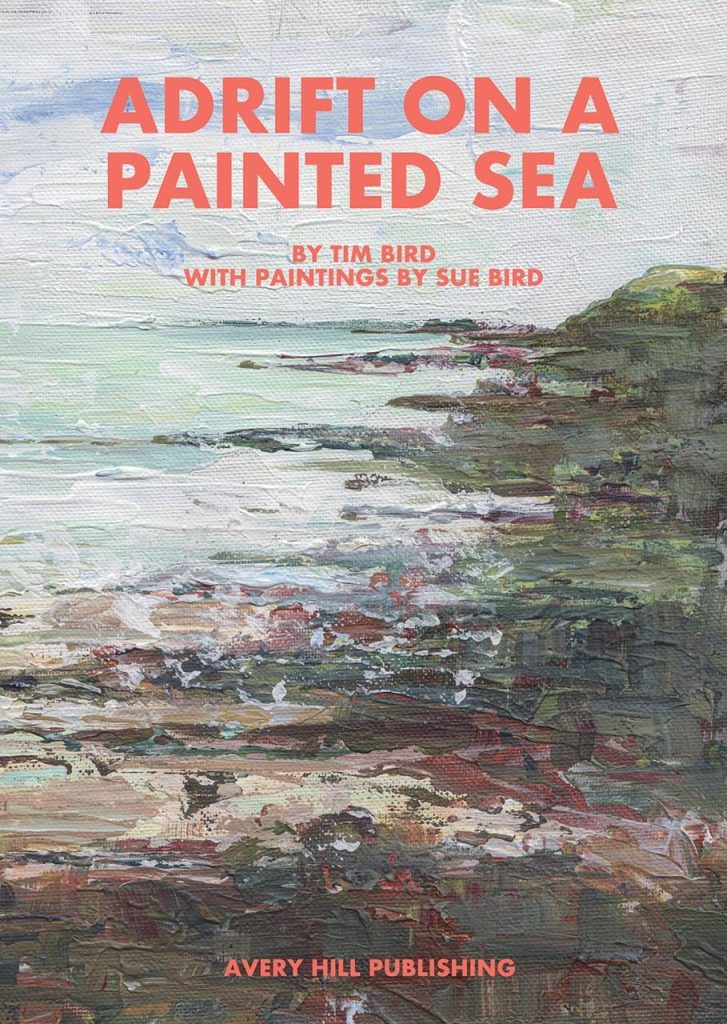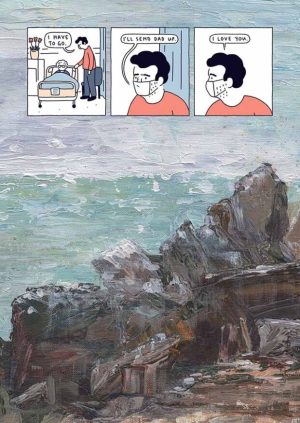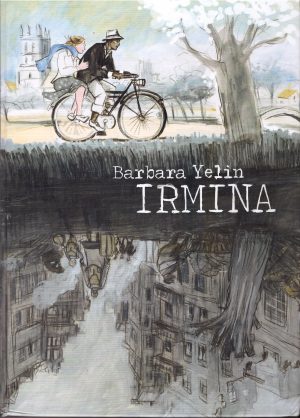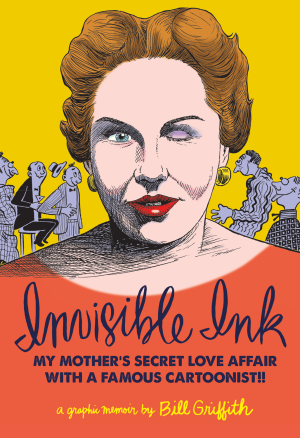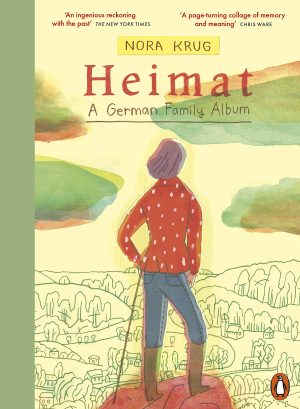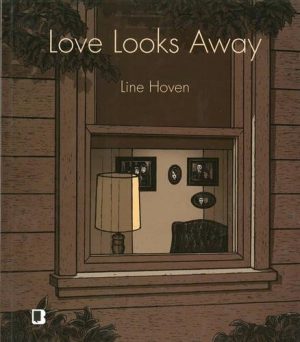Review by Win Wiacek
Every child’s late life obsession is to understand their parents and find similarities and differences in the lives each generation has led. What we remember and how we frame such recollections afflicts all of us. It also becomes increasingly important as we age, a truism washing all through this elegiac and ruminatory collation where comics storyteller Tim Bird details his response to finding the lost (more actually forgotten and mis-recalled) paintings of his recently deceased mother Sue. Contemporary found facts just don’t jibe with his own childhood memories and he cannot resist finding what the truth actually is.
What Tim irrefutably knows is that when not running a house, being a wife and rearing two kids, Sue Bird was a talented and compulsive artist, who from childhood created for the sheer joy of it. She loved the sea, shores and marine life, nature studies and still life painting. As a child herself she won competitions and her artwork toured in shows.
Or did they?
Mum created passionately and privately, and never tried to sell her work. After her death during the Covid pandemic, Tim uncovers some paintings and drawings – and a few scraps of newspapers squirreled away. Whilst still coming to terms with the awful restrictions that made her passing so cruel and unfair, he is increasingly gripped with his own passion: a hunger to know what’s what and what happened.
Using the recovered bounty of her dozens of paintings and by talking to anyone still alive who knew her, Tim reevaluates his own past and relationship with his mother, using her artworks as markers and chapter posts for a new sort of artistic statement. Moreover, as he seeks to unravel and reconfigure his fudged and muddy impressions of their times together, other shared milestone moments re-emerge: Northumberland beaches no one else enjoyed, listening to the Shipping Forecast and just sharing a drive to make things.
Using his comics as a skeleton and her paintings as meat on those bones, Bird applies his reshaped consciousness to the past and as his quest brings him closer to his own young family. He engineers those feelings and discoveries into a visual eulogy to Sue and the power of memory, loss, and – always and forever – family.
